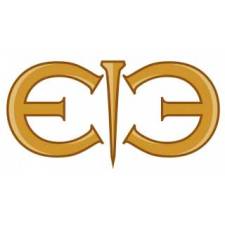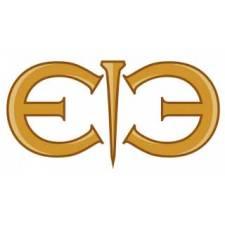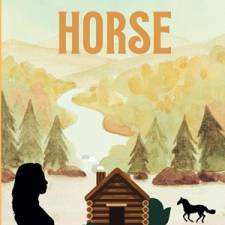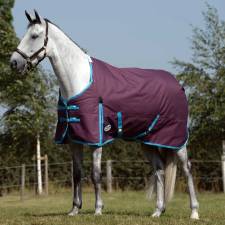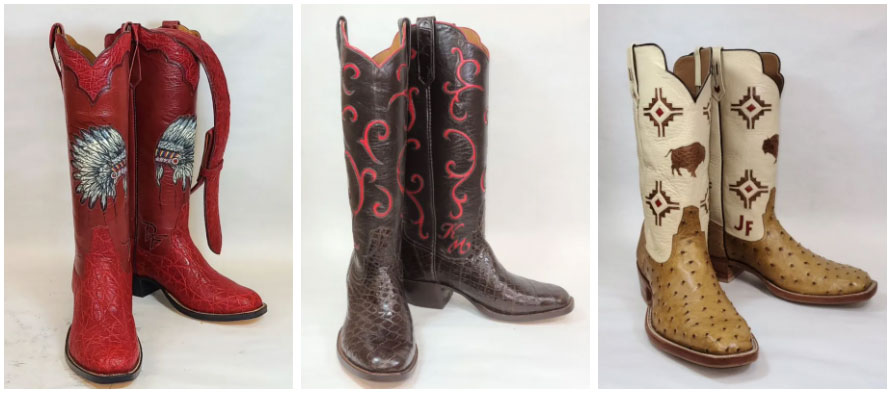
By Nick Pernokas
You probably noticed those old boots over in the corner. Leaning up against that canvas suitcase like an old dog begging for one more road trip. Orange tops. Black bottoms. Yeah, I know, not to everybody’s taste. They suit mine though and fit just as well. They should, because they are the only pair of custom boots I’ve ever had made. In 25 years, they’ve literally traveled around the world. From the subways of Paris to the dusty Ojinaga streets, from Los Angeles to Calgary. And they still look great, if I knock the dust off them. But this story is not about my boots, but rather about where they came from.
At the age of 10, Debby Matthews lived in Scottsdale, Arizona. Her dad, John Matthews, liked Quarter Horses and the family had several that he’d bought in Texas. The Quarter Horse show industry was booming then and like a lot of horse-crazy kids from that time period, Debby started showing horses. John sought out local horsemen to help his daughter and one of these was a man named Dick Griffith. Dick was a six-time World Champion Trick Rider from the days when it was a tough competitive rodeo event. He was also a two-time World Champion Bull Rider. During Dick Griffith’s career, he mastered more tricks than any other trick rider. He was noted for his grit and flamboyance. John and Dick became good friends.
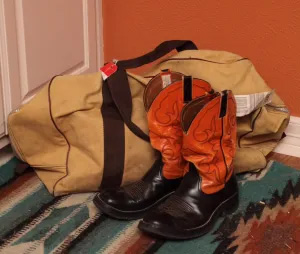
Dick Griffith was teaching trick riding at his ranch, and Debby spent a lot of time there while he was coaching other students.
“I was in absolute awe of this kind-hearted man,” remembers Debby.
Debby spent hours riding in the arena and in the desert with Dick.
“I was hooked immediately on trick riding, and it was from the master himself that I learned the basics,” says Debby.
The Matthews family became more involved with the booming Quarter Horse industry. A few years later, in the 1960s, the family moved to Texas, and Debby’s father partnered with famed horse trainer Lanham Riley on a ranch outside of Aledo. Debby grew up with Lanham’s kids and was very close to the family. Debby continued to compete in horse shows, and had a halter horse and a pleasure horse. Her dad had bought the halter gelding from the King Ranch, and both Debby and Lanham were successful at showing him in the halter classes. Debby also competed in barrel racing in high school and college. Debby, and her classmates at Weatherford College in Weatherford, Texas, motivated the college president to reinstate their college rodeo program.
Debby had an artistic streak as well and started drawing when she was 18.
In 1978, after spending a couple of years in Colorado, Debby moved back to Texas. An encounter with an old friend and neighbor, Jan Warvelle, led to a new opportunity for Debby. Jim and Jan Warvelle and their daughters were a successful contract act that appeared in Wild West Shows and rodeos. They specialized in Roman riding and Jim Warvelle did a lot of trick riding. The Warvelles were also friends with legendary trick roper Montie Montana Jr.
Montie was getting ready to take Buffalo Bill’s Wild West Show to England, but he needed more trick riders. Jan knew that Debby had done some trick riding and asked her if she was interested in going to England. Debby was worried that she might be a little rusty, but Jan polished her technique and taught her some new ones. Jan showed her a variety of strap, balance and ground work tricks that Debby added to her repertoire. The Warvelles also taught her Roman riding. When the troupe left for England in July of 1978, Debby was with them.
“I felt guilty getting paid because it was something I’d wanted to do my whole life,” laughs Debby.
The show was successful and performed for 30 days at Wembley Stadium. In 1979, they traveled to Shira Hama, Japan. Additional tours to Singapore and Las Vegas followed.
Debby continued to trick ride until the late Eighties, appearing at rodeos like the Fort Worth Stock Show and private contracted events. She also went to work as an art designer for Western Media in 1983, which was a division of the Quarter Horse News. Debby put together magazine ads for other publications as well as the QHN, product catalogs, fliers and horse sales catalogues. She also flexed her artistic ability through doing drawings and commissions for horsemen in her spare time. One of her Western Media accounts was a catalog for Mercedes Boot Company. Mercedes, which had been started by Rod Patrick in 1975, had just been purchased by well-known horseman and horse show judge, George Sossamon. One thing led to another, and in 1989, George and Debby were married. Debby left her art design job and went to work helping George with the boot company.
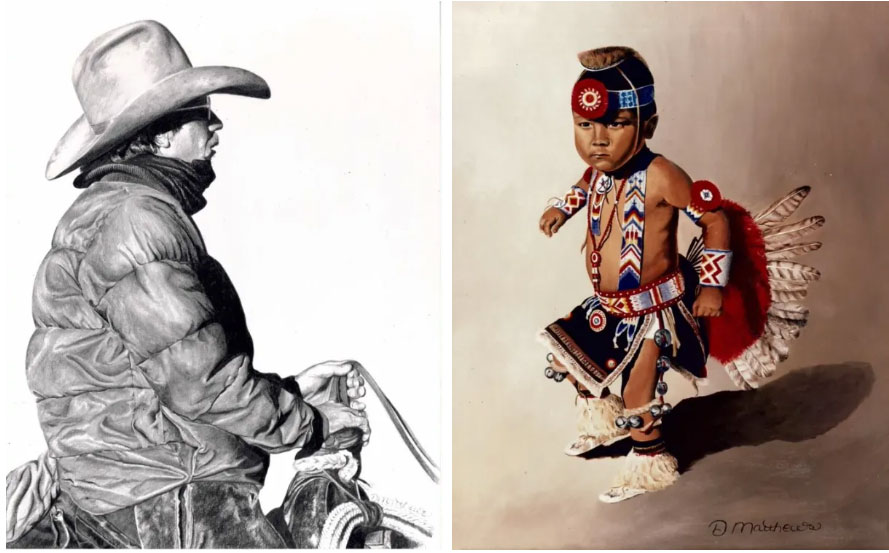
Mercedes Boot Company was located in Mercedes, in South Texas, but George moved it to Fort Worth so that he could have a more active role in running it. He hired a lot of workers from around Fort Worth that had worked for Justin Boots. Many of them were very talented, but at only one job. The Sossamons soon realized that they had to have people that knew how to make an entire boot the right way. In 1991, Debby began to get the better makers that worked for Mercedes to teach her the parts of making boots that they knew very well. An expert bootmaker that had worked for Nocona Boots taught her how to bottom a boot out. Another craftsman taught her to make patterns and to cut out the tops. A retired instructor from Okmulgee Technical Institute became her “go to” person for technical advice on sewing machines.
In the early Nineties, Mercedes employed 22 people. They had a showroom near the Fort Worth Stockyards and a production facility and warehouse on the Jacksboro Highway. Mercedes made a line of stock boots for immediate purchase and they also took orders for custom boots and matching belts.
The Sossamons took Mercedes Boots on the road with a booth at many major equine events. With all of the connections they already had in the show horse world, there was always a crowd visiting with them whether they were set up at the AQHA or Paint World Shows, or the NCHA Cutting Futurity. The stock show venues would bring in people in the cattle business. The rest of their clientele was rounded out by trendy upscale folks that wanted to look the part even if they didn’t have a horse. The style of their boots mirrored the show horse world of the day. The full round toe was king.
Sadly in 2000, George Sossamon passed away.
In 2004, Debby moved Mercedes Boots to a new showroom on White Settlement Road in Fort Worth. They happened to be right next to Wayne Bell’s Western Hauler Trucks, which was probably the most popular truck dealer and conversion company for the show horse world. They were also a couple of miles from Will Roger’s Coliseum. In other words, with all of the events going on in Fort Worth at the fairgrounds, there was a constant stream of competitive horsemen stopping by. Around 2005, Debby slowed down her traveling to trade shows and decided to concentrate on custom orders only.
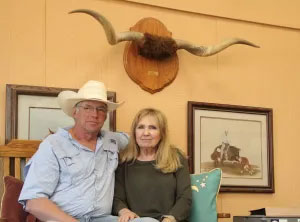
In April of 2008, Debby married James Farr. James had been a boot customer and had cutting bred horses, but his day job was building trailers.
“I participate in the business end of it, but not the manufacturing,” says James, of the boot business.
In 2012, eminent domain claimed their Fort Worth shop property for road expansion. For three years they looked for a new location and finally found a building in Ben Wheeler, Texas, that was to be the home of the boot company for the next few years.
These days, a newer shop is located on their ranch in Terrell, Texas, where they also raise “old time” Texas Longhorns. The attractive building is simple and as neat as a boot shop gets. Wild West show posters and artwork adorn the walls and sample boots fill shelves. Boots are in different stages of construction on the benches. Debby has two helpers and one of them is part time. She runs about six to eight months behind on boot production. Mercedes Boot prices start at $1,295.
“We try to make a boot as timeless as we can, so it has a classic good look; it’s not something that’s a flash in the pan and it doesn’t go out of style in two years,” says Debby. “We want our customers to be lifelong; to wear them all day and make their living in them.”
Mercedes tries to make a boot that appeals to the individual customer’s desires. Some customers want a plain boot, but they don’t want it to look like it came off the shelf. Even the simplest Mercedes boot is obviously high end, with nicely finished edges and seams. Besides the elbow grease, Mercedes offers an extremely large assortment of design options to choose from and they do a lot of hand cut custom inlays. Every aspect of the boot is left to the customer’s personal choice. The customer will have both feet measured and a custom last is built for each foot. Over 250 steps follow in the actual boot construction process.
Ostrich and alligator remain their most popular exotic leathers, although they’ve even used camel. Some people bring their own hides in. To make sure that the finished product is what the customer wants, a full-scale color drawing of the boot uppers is provided to them for approval.
When Debby isn’t practicing her artistic ability on leather, she can be found wielding a pencil or a paintbrush. Her drawings and paintings are magnificent. Horses and horsemen are immediately recognizable from their “glory days” on the walls of the shop. Many of these are done in pencil.
“I like pencil the best because you can start and stop easily on it.”
Debby also works in oil pencil and oil pastels combined, and oil on canvas.
“I’d like to eventually do a little more of this.”
This makes me feel fortunate to have my old pair of boots in the corner. If the world finds out about Debby Farr’s beautiful artwork, there may be a little less of “that.”
If you’d like to find out about this thoroughly Texas company, or Debby’s wonderful artwork, you can find Mercedes Boot Co in our section Apparel - Boots.
This article originally appeared on Shop Talk Magazine and is published here with permission.
There are more interesting articles in our section on Recreation & Lifestyle.








